Travel & Planning for New Destination Released. Free Shipping to Most Countries Around the World.
Free Shipping to Most Countries Around the World.
It is here, beside Copenhagen’s Kastellet Fortress, that Hans Christian Andersen’s Little Mermaid gazes wistfully out to sea. To be frank, seeing the statue in person feels rather ordinary – far less striking than the vistas within this remarkably preserved Nordic military stronghold: its windmill turning gently in the breeze, its green slopes surrounding the star‑shaped bastions, and its fountain and pool quietly reflecting the pale northern sky.
Laid out in the shape of a five‑pointed star, the fortress is crowned with five bastions named for royalty and nobility: the King’s, the Queen’s, the Count’s, the Princess’s, and the Prince’s. Construction of Kastellet began in 1626 under King Christian IV of Denmark, but it was his successor, Frederick III, who ultimately brought the project to completion.
Kastellet is entered through two gates – the King’s Gate to the south, opening toward the city, and the Norway Gate to the north. Both were built in 1663 when Dutch engineer Henrik Rüse was commissioned to redesign and expand the fortress. They are fine examples of Dutch Baroque architecture, guarded by symmetrically placed sentry boxes. The King’s Gate is richly adorned with wreaths, pilasters, and a bust of King Frederick III, while the Norway Gate, once facing the open countryside, remains characteristically plain. Today, Kastellet still houses military offices, yet it also serves as a public park and historical landmark – a rare blend of living heritage and quiet retreat.
The Gothic‑style church that appears in my photograph is St. Alban’s Church, standing serenely at the northern end of Amaliegade, just beside the King’s Gate and the Gefion Fountain. Built between 1885 and 1887 to serve Copenhagen’s growing English congregation, the church exudes a solemn dignity, its stone spire gleaming softly against the evening sky. Set here, in the homeland of Andersen himself, it lends the entire scene a touch of fairytale grace.
East of the church lies the Gefion Fountain, dedicated to Gefjon — the Norse goddess of ploughing and the origin of land, who embodies both fertility and purity. According to legend, she ploughed the ground with her sons transformed into oxen, carving out the island of Zealand from Swedish soil. The fountain was a gift from the Carlsberg Foundation to the city of Copenhagen on the brewery’s fiftieth anniversary. Designed by Danish sculptor Anders Bundgaard, it was carved between 1897 and 1899 in a naturalistic style that vividly brings the myth to life.
The column captured in another of my photographs is the Ivar Huitfeldt Memorial Column, completed in 1886 to commemorate naval hero Ivar Huitfeldt and his crew, who perished during the Great Northern War. At the summit stands a bronze figure of Victoria, the Roman goddess of victory, while the base is adorned with relics of naval warfare – cannons, anchors, and fragments of ships – a solemn tribute cast in bronze and stone.
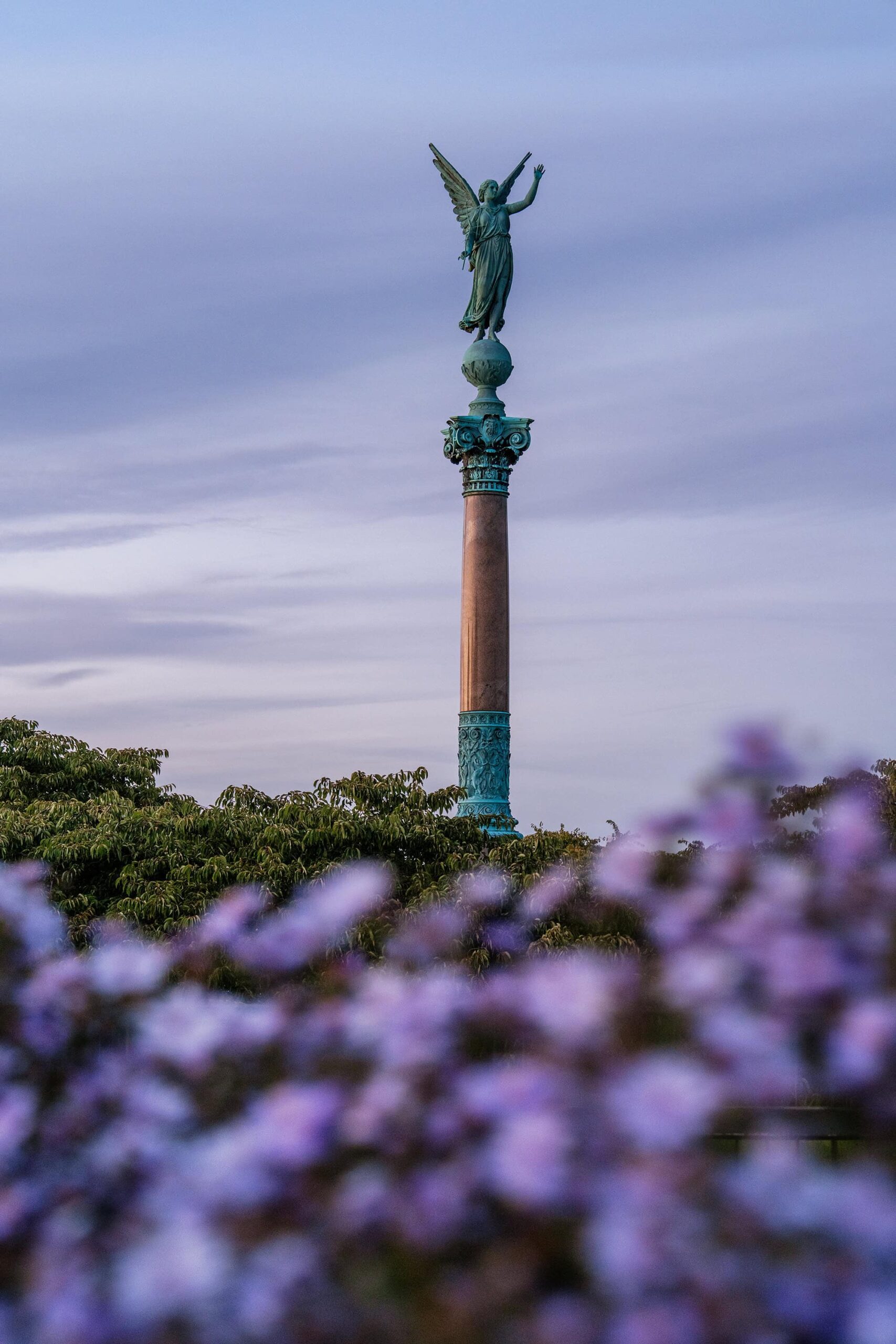
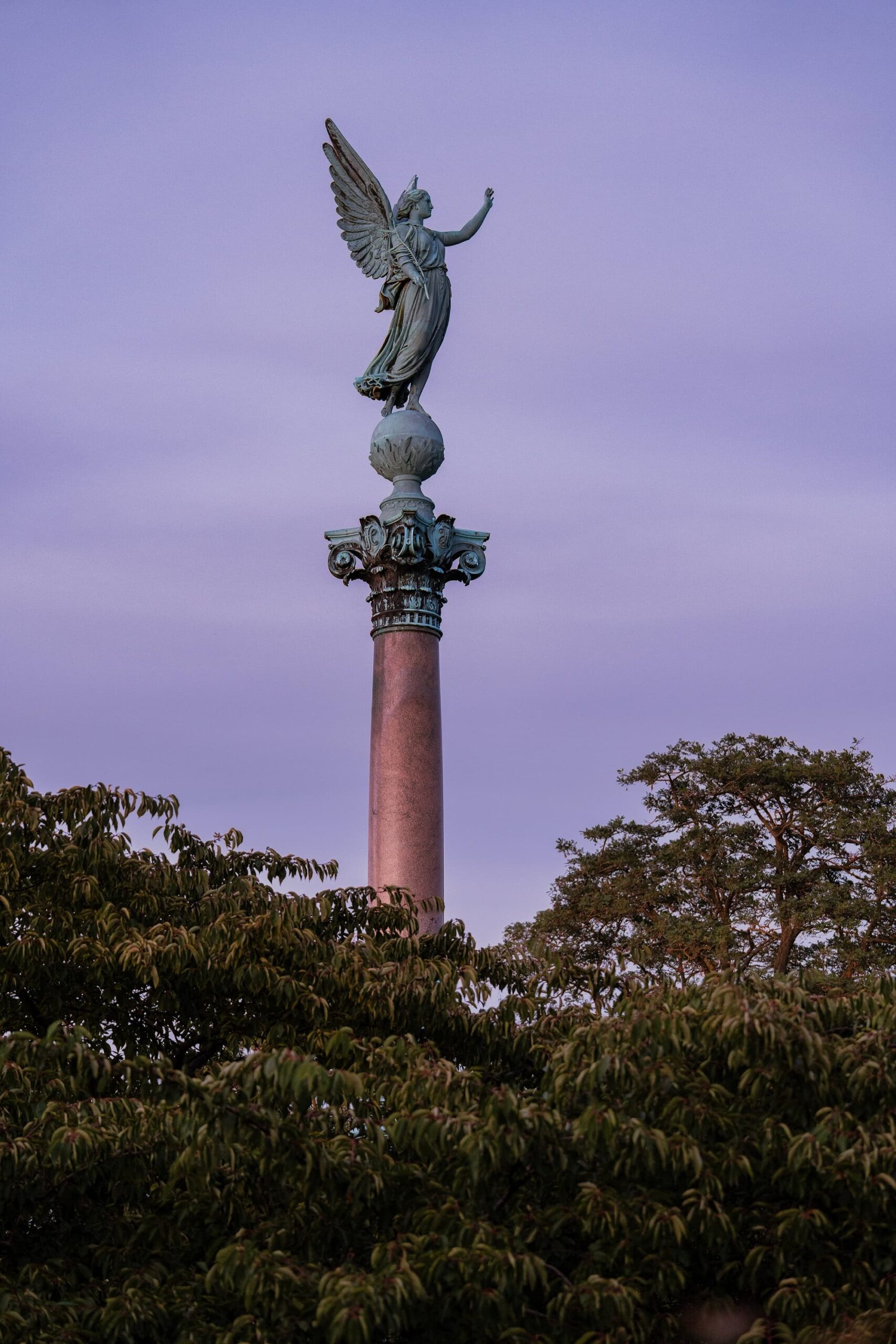
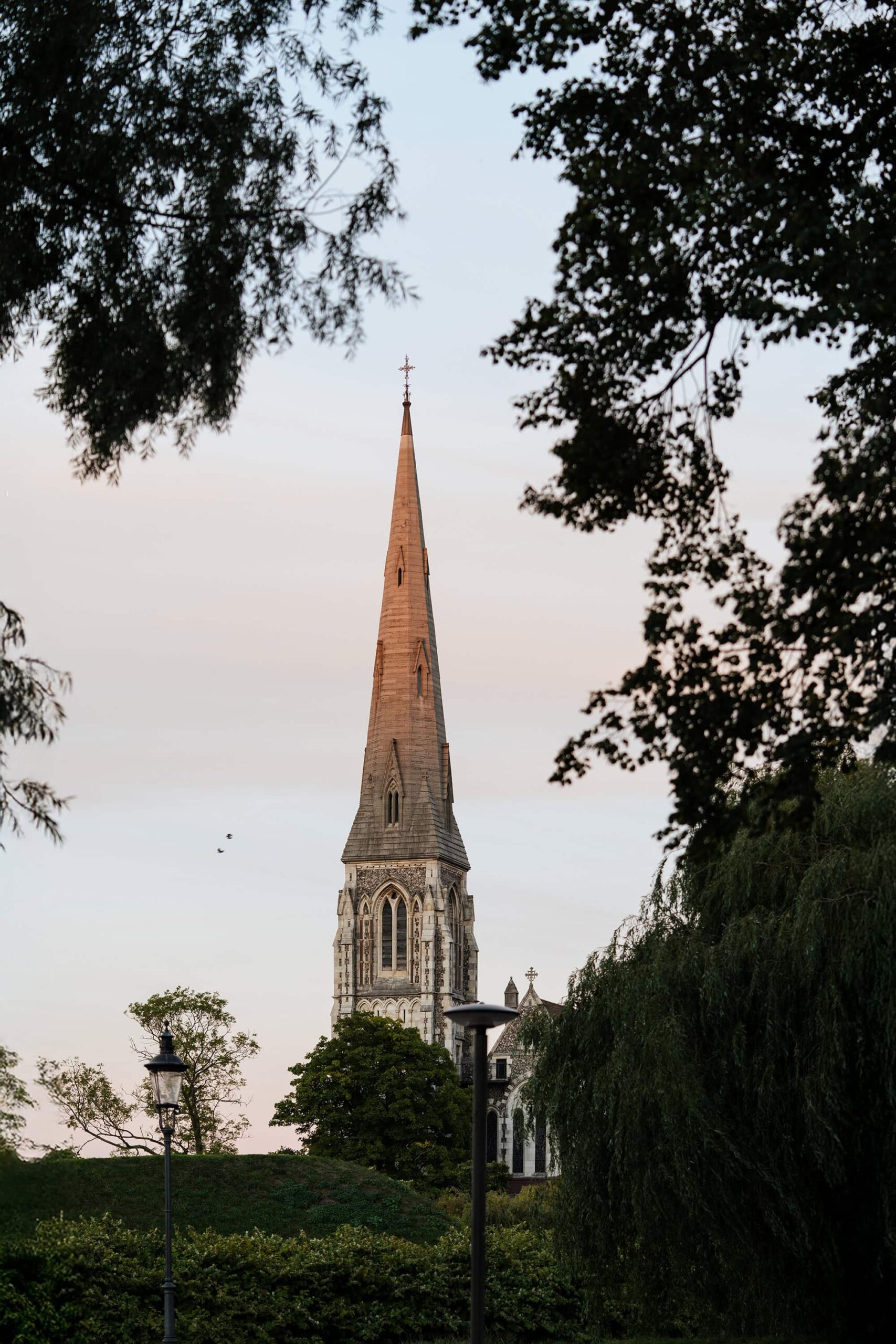
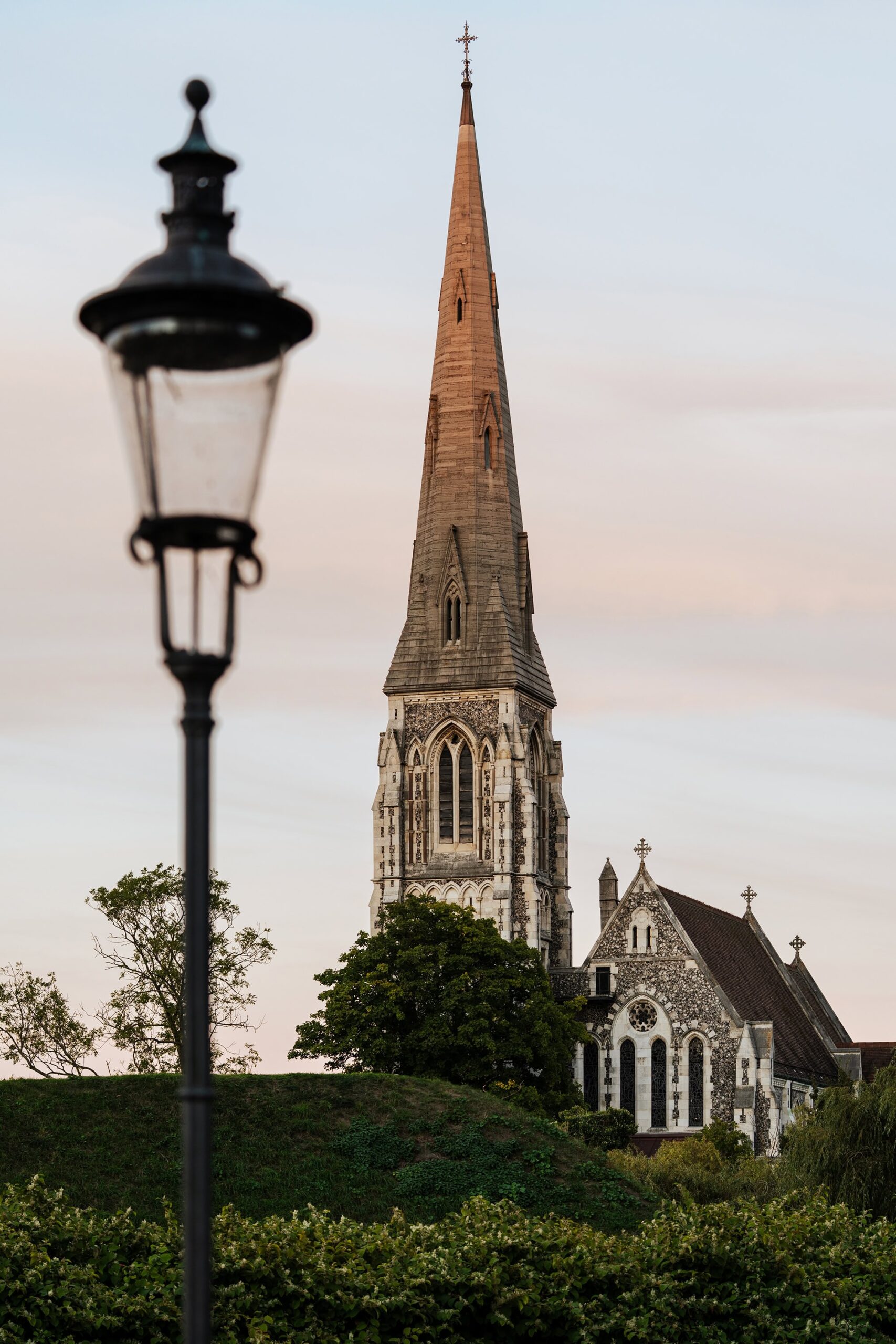
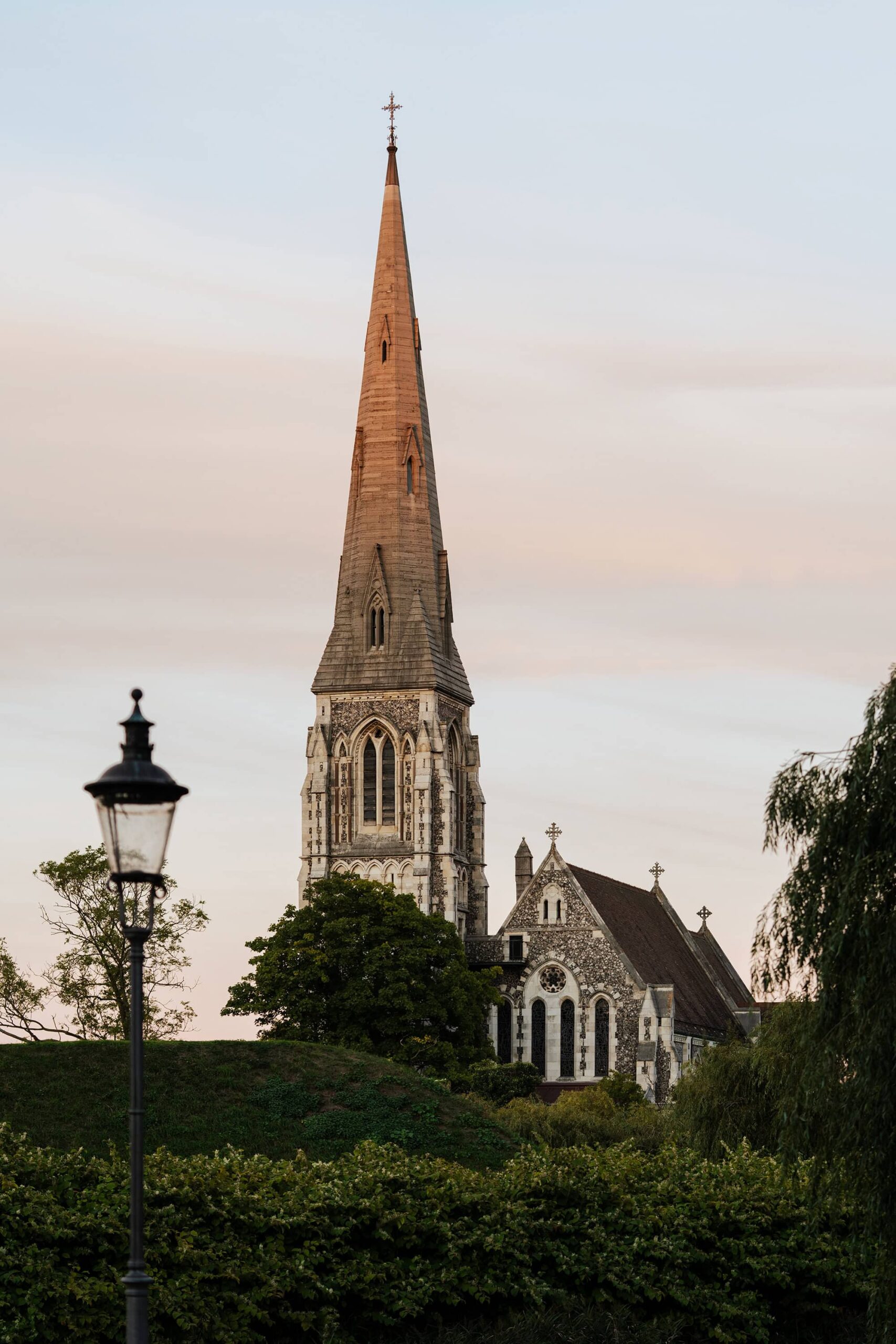





We use cookies to optimize your experience, analyze usage, and personalize content. Your continued browsing indicates consent to our cookie usage and the sharing of site interaction data with our marketing and analytics partners.